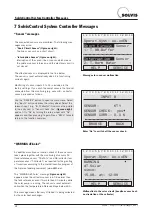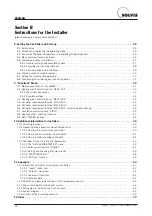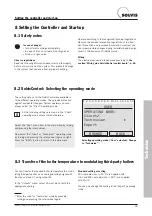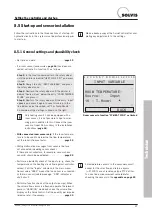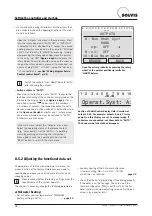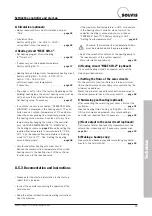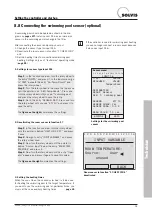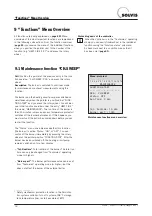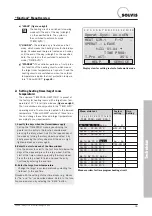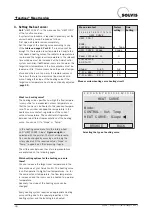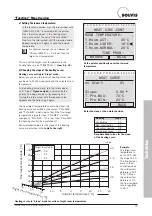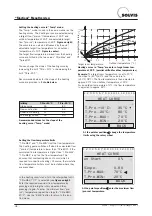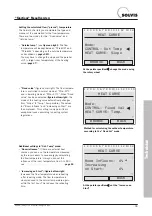
P32-EN – Subject to technical changes 04.11
36
“Functions” Menu Overview
What is a heating curve?
The heating curve specifies how high the flow tempera-
ture must be for a measured outdoor temperature so
that the rooms can be heated to the required tempera-
ture. The controller can keep the temperature in the
heated rooms constant, regardless of the current
outdoor temperature. The controller distinguishes
between two different representations of the heating
curve. You can set it to “Slope” or “Temp.”:
Menu, plain text
Factory
Own
setting
Setting
1 2 3 4 5 6 7 8 9 10 11 12 13 14
HEAT CURVE
HEAT CIR.1
MODE:
CONTROL: Out. Temp
Out. Temp.
HEAT CURVE: Slope
Slope
Room Influenc: 0%
0
Increasing
on Start: %
0
Slope: 0.80
0.8
T.Pre.MAX: 70°C
70
T.Pre.MIN: 20°C
20
Menu overview heating curve heating circuit
3. Setting the heat curve:
Call
: “HEAT CURVE”: in the menu section “HEAT CIR.1”
of the function overview.
A systematic procedure is required to precisely set the
correct heating curve. Proceed as follows:
First open all radiator valves completely.
Set the slope of the heating curve according to one
of the
tables on page 37 or 38
. If a room cannot be
brought to the required room temperature despite the
fully opened heating valves, the radiator temperature is
too low and the target room temperature in the relevant
time windows must be increased at the SolvisControl
system controller. If
all
heated rooms are too warm, the
target room temperature in the time windows must be
lowered a little. If some rooms have the correct temper-
ature and others are too warm, the radiator valves in
the rooms that are too warm must be closed some
more. Change the slope of the heating curve if the
target room temperature has to be continually adjusted
(
page 21
).
1 2 3 4 5 6 7 8 9 10 11 12 13 14
HEAT CURVE
BROWSE
BACK
Mode:
CONTROL: Out Temp
HEAT CURVE: Slope
Selecting the type of heating curve
In the heating curve menu turn the rotary wheel
until “HEAT CURVE: Slope” (
figure on right
) is
selected with the pointer. The form of representa-
tion can be changed by pressing and turning the
rotary wheel until the required value (“Slope” or
“Temp.”) appears and then pressing it again.
The differences between these two representations
are explained on the following pages.
Which setting options for the heating curve are
there?
You can increase the target room temperature in the
time windows at your SolvisControl. The heating curve
is shifted parallel to higher flow temperatures, i.e. for
the same outdoor temperature, the flow temperature
is increased and the rooms can be heated to a warmer
temperature.
Secondly, the slope of the heating curve can be
changed.
Every heating system requires an appropriate heating
curve setting due to the special properties of the
heating system and the building to be heated.

